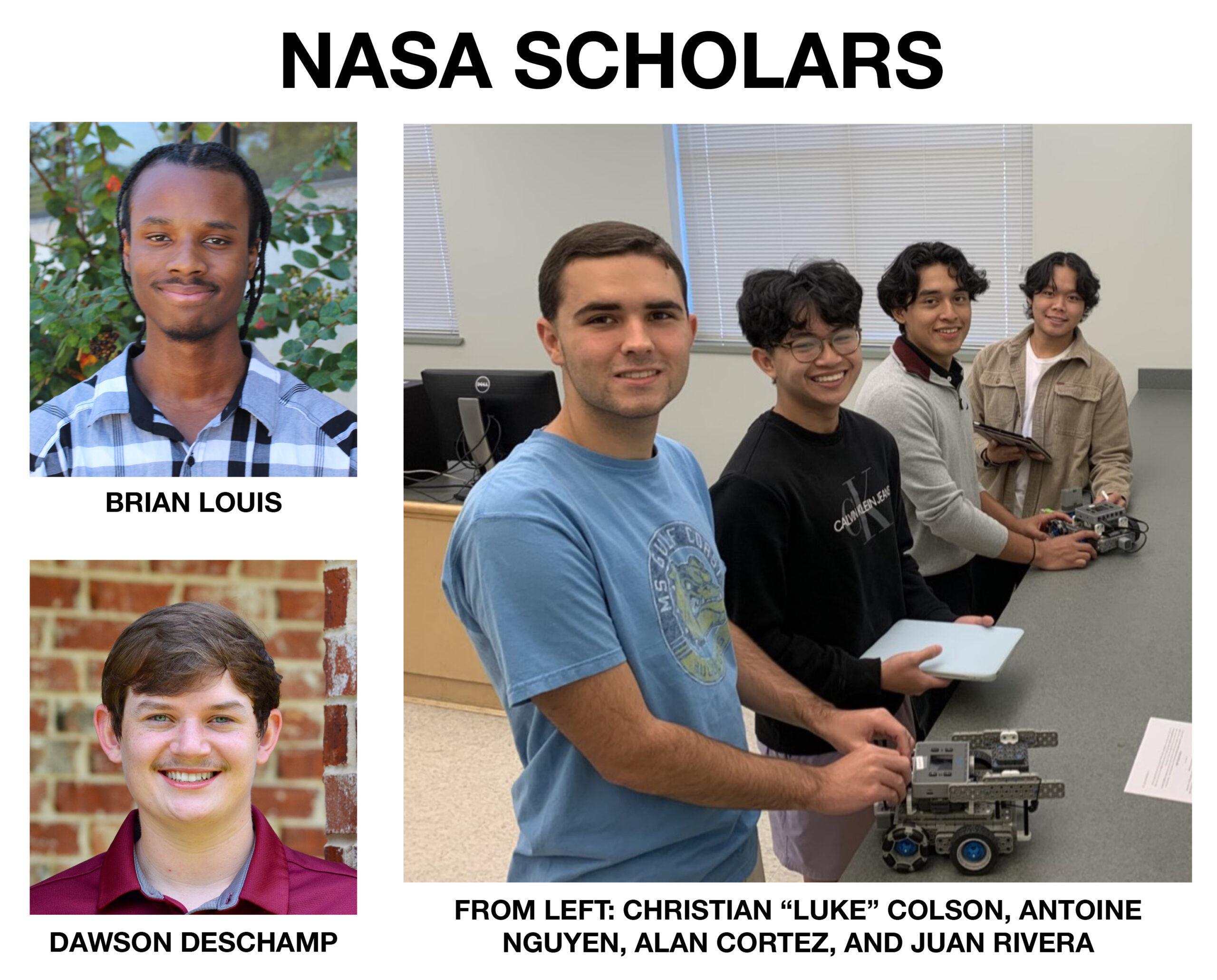Six MGCCC students complete NASA NCAS Mission Two with high hopes for Mission Three
 MGCCC’s team of NASA NCAS scholars have successfully completed both Mission One and Mission Two and are awaiting notification of whether they have been accepted into Mission Three. If chosen, the six students from all three of MGCCC’s campuses will have the opportunity to live onsite for a week at a NASA field center. STEM-based activities will include an engineering design challenge, live subject matter expert presentations, a resume workshop, a networking event, and a job shadowing opportunity with a NASA expert.
MGCCC’s team of NASA NCAS scholars have successfully completed both Mission One and Mission Two and are awaiting notification of whether they have been accepted into Mission Three. If chosen, the six students from all three of MGCCC’s campuses will have the opportunity to live onsite for a week at a NASA field center. STEM-based activities will include an engineering design challenge, live subject matter expert presentations, a resume workshop, a networking event, and a job shadowing opportunity with a NASA expert.
Mission Two, which the group just finished in October and early November, was shorter than Mission One. It lasted about a week, and was much more intense, with work on Microsoft Teams from 9 a.m. – 5 p.m. with their team of students (about 10-11 others from disparate parts of the U.S.) and with NASA scientists, engineers, and astronauts. Each team completed a project involving a research-based moon-shot.
Only the very best in this intense competition will be selected to make it to Mission 3.
“Mission Two was quite challenging to complete,” said Christian ‘Luke’ Colson. “There were many things to learn, from like the directions of current NASA missions and information from several guest speakers.”
“Mission Two was intense,” said Alan Cortes Cruz. “We had meetings all day and then worked most of the afternoon and night on our project design. It was competitive and we wanted to show our best.”
“Our team met with astrophysicist Dr. Begona Vila,” said Brian Louis. “She was our missions center supervisor. My team’s job was to create a proof-of-concept mission that involved Autonomous Systems and Robotics (ASR). The role that I was assigned was Science Communications Specialist. My mentor for science communications was Sarah Mann, public affairs specialist with NASA.”
Louis, Colson, and Cortes Cruz, who were on different teams, mentioned having team members from California, Maryland, Colorado, and a wide variety of other states.
Colson said, “Obviously, what made the course better was the team I was in; I could not have completed much without the people who were in my Mission crew.” Cortes Cruz echoed the sentiment about his team, which included his teammate from MGCCC, Antoine Nguyen.
Cortes Cruz described his position on the team as being the materials and payload manager. He had to be sure to pack the equipment that would be necessary for support on the moon, but which would not overwhelm weight and fuel capacity. He showed the statistical charts produced to analyze what they would take and why and how close they came to maximum without going over. He also compared this to other teams’ analyses.
The students produced a real engineering analysis in just over a week. And they were supported by numerous teachers in doing so, who allowed them to make up work from their classes while they were focusing on this important project.
“Mission Two was an amazing experience and I have to give credit to my MGCCC instructors for helping me coordinate the week around my regular schoolwork,” said Dawson Deschamp of the Perkinston Campus. “Learning to work in a team like the one with NCAS has been an incredible experience. I have never had the opportunity to be a part of a team this large, especially not with so many likeminded individuals. It makes me very optimistic about getting to participate in a real mission team with NASA.”
Luke Colson, majoring in computer engineering, Antoine Nguyen and Alan Cortes Cruz, both majoring in computer science, are all three from the Harrison County Campus and had their Mission Two experience in mid-October. Juan Rivera, majoring in computer science, another Harrison County student, Dawson Deschamp, an electrical engineering major at the Perkinston Campus, and Brian Louis, a mechanical engineering major from the Jackson County Campus, had their Mission Two experience from late October through early November.
Nguyen summed up the importance of the experience: “It gave me an opportunity to intern at NASA as a community college student which would have never been possible without NCAS. NCAS taught me a lot about internships in general and set me up well for the future.”
One of the advantages of participating in NASA NCAS besides meeting the NASA scientists, engineers and astronauts is the inside access to internships and other events and resources the NCAS Mission Two completers obtain.
Those interested in pursuing careers with NASA should consider participating in NCAS. Allison Mull, computer science instructor at the Harrison County Campus, encouraged students to major in engineering or computer science and to contact a MGCCC mathematics or computer science instructor for more information.
“This is an incredible opportunity for our students and one that really gets their feet in the door for a future working at NASA,” she said. “That is a dream career for so many people.”
